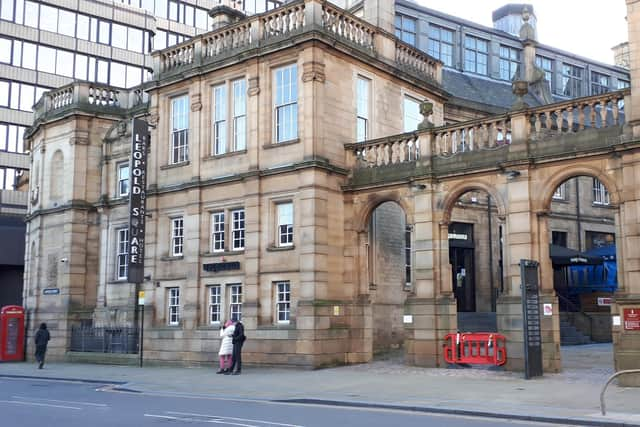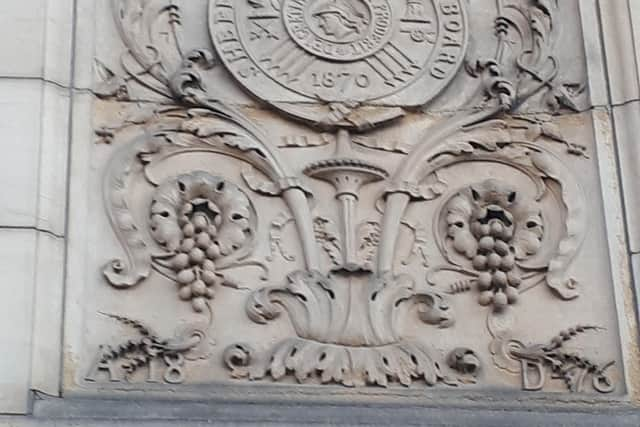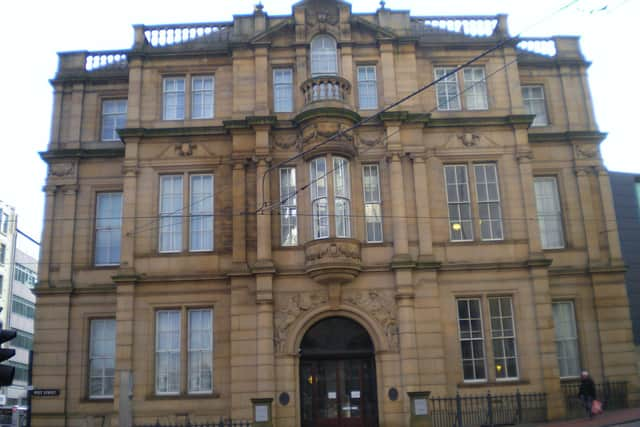Beautiful Sheffield Victorian buildings created by pioneers in education
and live on Freeview channel 276
Something really special is the Leopold Street education complex, a group of five listed buildings. It’s one of the largest such concentrations in the city. And it has a lot to tell us about the way Sheffield developed in the later 19th century.
Let’s start with the background. Before the 1870 Education Act, most children got no schooling.
Advertisement
Hide AdAdvertisement
Hide AdFor those whose parents could afford the fees there was, as in every town and city, a rather random mix of provision of – to put it politely - varied quality: charity schools, grammar schools, church schools, dame schools. There may have been around 150 in mid-century Sheffield.


From 1870, that changed. The Act allowed local communities to elect a school board to take charge of building new schools, officially to fill the gaps in private provision, though boards rapidly came to do much more than that.
Sheffield was very quick off the mark; the School Board was up and running by late 1870, it appointed an architect in May 1871 and broke ground for its first school, and indeed the first board school in the country, the same year.
From the outset the Sheffield Board had great ambitions. It wanted its own offices (at first it rented) and it wanted a central school to offer education to girls and boys of ability beyond the elementary provision laid down by the 1870 Act. So it began discreetly to assemble land in the town centre.
Advertisement
Hide AdAdvertisement
Hide AdThis chimed neatly with the Town Council’s plans to restructure the central streets, which were not up to scratch for a town that had begun to think it should look less like an overgrown village, with muddy lanes, and more like the prosperous industrial centre it had become.


With co-operation from the Town Council and judicious swapping of land holdings – the Board sold the Council the land that became Leopold Street, the Council transferred a small area it owned to the Board - both ended up with the space they wanted.
It probably helped that the industrialist Mark Firth was a member of both the Board and the Council, and was also looking for a site for a university college; he bought its site from the Board in 1877. This chain of transactions produced the core of Victorian Sheffield.
There was co-operation on the buildings, too. The School Board wanted to make sure that the future complex – offices, central school, university college – was a co-ordinated development. It didn’t want uniformity but it did want harmony.
Advertisement
Hide AdAdvertisement
Hide AdFirth had appointed the Sheffield architect T J Flockton to design his university college; so the Board appointed Flockton to work jointly with the prestigious London schools architect E R Robson to design the offices and central school.


The individual buildings were in broadly Renaissance style and the same Huddersfield stone was used for all three. And in Leopold Street the use of a stone arcade to link the offices and the school helped create a sense of unity. If you take a close look at these three buildings you’ll see differences in style, but they work very well together.
Of course there have been some changes in 150 years; the former university college (forerunner of Sheffield University) acquired an extra storey, as did the offices – now the Leopold Hotel; the central school was extended.
All these three were complete and operational by 1880. But the Board hadn’t finished, and it still had land behind them. In 1894 an infants’ school was added to the site, round in Bow Street.
Advertisement
Hide AdAdvertisement
Hide AdThe architect was J B Mitchell Withers, another leading Sheffield practitioner. It’s ‘stripped classical’ in style, plain and neat. You may wonder, looking at it now, how they got 503 infants into it!
The following year, 1895, the Board went to Mitchell Withers again for the Science Schools in Orchard Lane – you can still see the name over the door. It’s a much bigger building than you might think from its rather deceptive narrow frontage (and, truth be told, a rather awkward join with the central school building).
Then in 1899 came the last part of the complex: the Holly Street Pupil Teachers’ Centre, designed by Sheffield architect H W Lockwood. Its frontage is an exuberant mix of stair turrets and steeples, and it proclaims its function in some beautiful carving over the front door.
All these buildings are well worth a close look. There are good details – for example, on the corner of Orchard Lane and Leopold Street can be found the School Board’s coat of arms – carefully dated 1870, the year the Board came into existence.
Advertisement
Hide AdAdvertisement
Hide AdOn the corner of Leopold and West Streets is the ornamental entrance to University College, with its elaborate oriel window and, above the door, carvings of Art and Science by Onslow Ford, a major figure of the time (he also carved the statue of the Duke of Norfolk in the entrance hall of the Town Hall). The main figures are flanked by some delightful cherubs.
The Leopold Street complex is the product of a long-term development scheme managed by prominent citizens determined that Sheffield should have educational facilities of the scale and quality they believed it deserved.
They took risks; this programme ran alongside a hectic scheme for building board schools round the town, which also had to be managed; and they also gambled they would get the legal powers they needed to do the work – some began before those powers had been granted.
And they created, and left to us, something that was, literally, unique. By the turn of the century the Leopold Street complex provided education at every level from infants’ up to university graduate. There was no other such centre, as far as we know, in the country.
Advertisement
Hide AdAdvertisement
Hide AdSome school boards co-located offices and central school, but didn’t add the rest. Sheffield benefited, as it has done ever since; the complex was beautifully restored and repurposed in 2000. I can’t help thinking the School Board would have approved.
In these confusing and worrying times, local journalism is more vital than ever. Thanks to everyone who helps us ask the questions that matter by taking out a digital subscription or buying a paper. We stand together. Nancy Fielder, editor